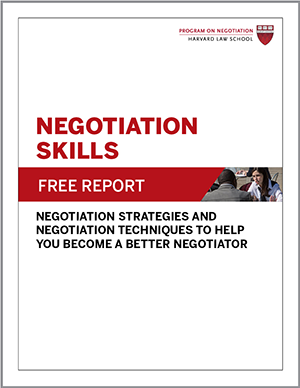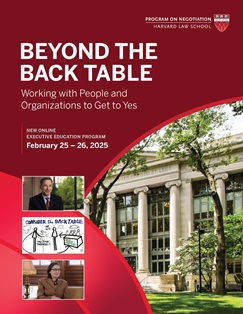At one point or another, most of us have found ourselves in the midst of a chaotic negotiation process—one that takes much longer than expected, creates a great deal of stress, and squanders resources.
Now imagine having to face multiple such negotiations annually. For many years, that’s the situation National Football League (NFL) teams were in as they struggled to negotiate rookie contracts and get the players on the field before the start of each season.
Under its existing negotiation process, the NFL allotted teams a set amount of salary-cap room to be divided among their rookies. Rookies’ agents typically delayed negotiating with teams, reluctant to be among the first to reach a deal, writes Andrew Brandt, a former players’ negotiation agent and Green Bay Packers vice president, for Sports Illustrated.
While working for the Packers, Brandt was frustrated that many agents seemed primarily motivated “to not look bad rather than doing what was best for the client.” Negotiations would stretch into the summer training season and sometimes even prevent players from taking the field during early games.
In addition, the agents for top rookies came up with creative ways to negotiate around the salary cap, including negotiating advances and bonuses. Moreover, teams ended up showering riches on their first-round rookie picks, leaving other rookies with considerably less. “Top rookies walloped NFL teams coming and going,” according to Brandt. Some of these highly compensated young players failed to live up to expectations, leading to disappointment all around.
Setting a New Strategy
As they prepared to negotiate their 2011 collective-bargaining agreement with the players, NFL team owners were determined to overhaul the negotiation process for signing rookies. This wasn’t difficult, given that veteran players were tired of seeing rookies earn more than proven players and that rookies had “no voice” in the negotiation process, according to Brandt.
The owners and the NFL Players Association (NFLPA) reached a new negotiation process modeled on the one used by the National Basketball Association. Under the new negotiation process, each rookie draft pick receives a salary within a predetermined range and a four-year contract (with first-round picks open to being optioned for a fifth year). Most salaries are set at a nonguaranteed minimum and include a predetermined signing bonus.
From a Distraction to an Afterthought
Four years later, NFL teams were pleased with how the new negotiation process for rookie contracts were playing out. In 2014, all 256 rookie draft picks were signed by June 17, about six weeks before the start of any of the teams’ training camps, according to the Associated Press (AP). Negotiations that used to take months typically took just a few days.
The overhauled negotiation process resulted in lower earnings for top rookies but reduced their risk of being perceived as overpaid if they failed to meet expectations. And instead of distracting them from their training, contract negotiations have “almost become an afterthought for players,” according to the AP. With the rookie showcase, draft process, and contract “finally out of the way, now it’s just football,” second-round Vikings draft pick Eric Kendricks told the AP. “And I couldn’t ask for more.”
In addition, with rookies receiving nonnegotiable salary offers, some players negotiated better deals with their agents. By the 2023 draft, competition for clients had led some agents to cut their commissions to as low as 1% for deals with rookies, according to Front Office Sports. Agencies also routinely pay rookies up to $70,000 for training and living costs after they declare for the draft. “Some firms treat the draft as a loss leader to accumulate more talent,” one agent told Front Office Sports.
Although negotiating a rookie contract “has lost some of its luster” for agents, writes agent Marc Lillibridge on the website Bleacher Report, the new system helps well-performing rookies “see the big dollars in their second contract. That is where the fun negotiations for an agent have gone.” And the commissions, obviously, as well.
Overhauling a Negotiation Process
If your organization’s negotiations give you headaches, think about whether a better negotiation process is within reach. Then set about becoming part of the solution. In particular, you might consider the following questions:
- What inefficiencies need to be resolved? Look beyond price negotiations to include factors such as timing, the number of parties, the format of negotiations, and the issues on the table.
- Do parties face incentives to drag out the negotiations or otherwise make them inefficient? How might such incentives be eliminated?
- Who should be involved in negotiating the new process? The NFL didn’t include rookies in its negotiations. However, it is often wise to give all key parties a role when negotiating a new negotiation process, lest they rebel when the new system is in place.
- Should particular deal terms be made nonnegotiable? For example, should salaries be preset or limited to a narrow range? Placing certain issues off-limits to negotiation might streamline the process but, again, could backfire if parties feel overly constrained.
What kinds of changes have you made, or would you like to make, to your organization’s negotiation process?














